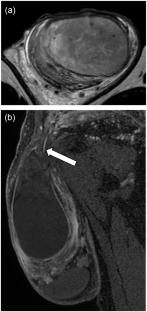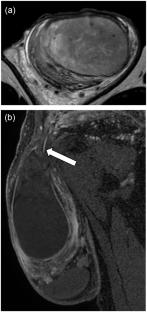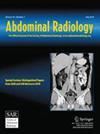Transverse testicular ectopia with persistent müllerian duct syndrome: a case report
Abstract
Transverse testicular ectopia (TTE) is a variant of ectopic testis in which both testes are located in the same scrotum. Persistent Müllerian duct syndrome (PMDS) is a congenital anomaly characterized by the retention of Müllerian duct remnants in males. TTE is a characteristic clinical finding in PMDS. This case report describes a patient in his 50s who was diagnosed with PMDS based on TTE findings and a pelvic structure suggestive of a Müllerian duct remnant. Computed tomography (CT) and magnetic resonance imaging (MRI) revealed the normal left testis within the left scrotum. The soft tissue was identified dorsal to the left testis, supplied from branches of bilateral internal iliac arteries. Additionally, a rod-like structure was observed in the left pelvis, appearing continuous with the soft tissue in the left scrotum. The right testis, enlarged and torsed, was located cranially within the left scrotum. A cord-like structure extended continuously from this ectopically positioned right testis toward the right inguinal region. Surgical findings revealed a normal left testis and torsion of the right testis. The right testis was removed. Histological examination revealed a seminoma within the right testis, and immunostaining confirmed the presence of attached Müllerian duct remnants. Prior imaging revealed that the right testis was located in the abdominal cavity, indicating that TTE in this case did not occur during testicular descent. In PMDS cases, TTE is believed to result from the traction of one testis by Müllerian duct remnants and the testicular mobility due to an abnormally long gubernaculum, which is a crucial role in normal testicular descent. The findings in this case support this theory and further indicate that TTE can occur even after testicular descent is complete. This report describes a case of TTE with a causative Müllerian duct remnant and a presumed abnormally long gubernaculum identified on imaging, which contributes to the understanding of this rare condition.
Graphical abstract



 求助内容:
求助内容: 应助结果提醒方式:
应助结果提醒方式:


